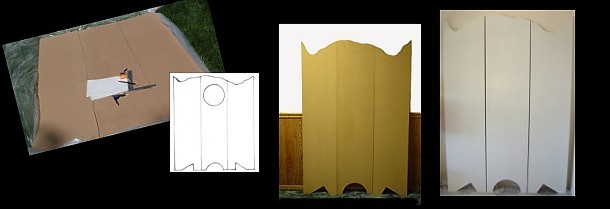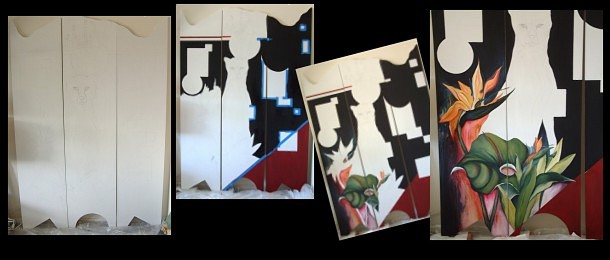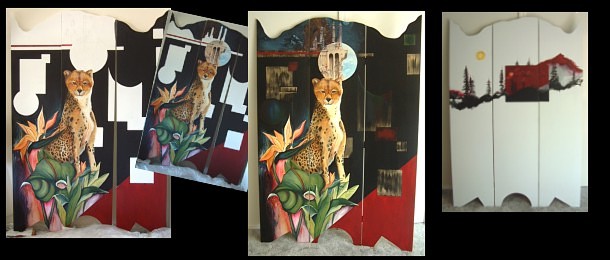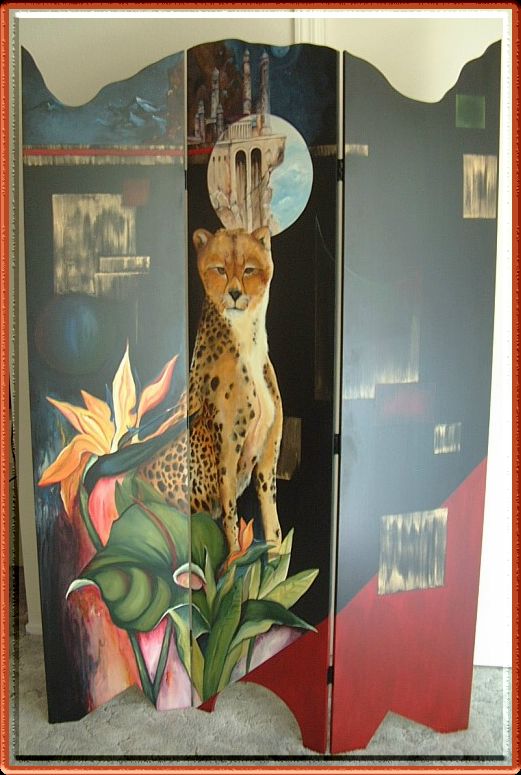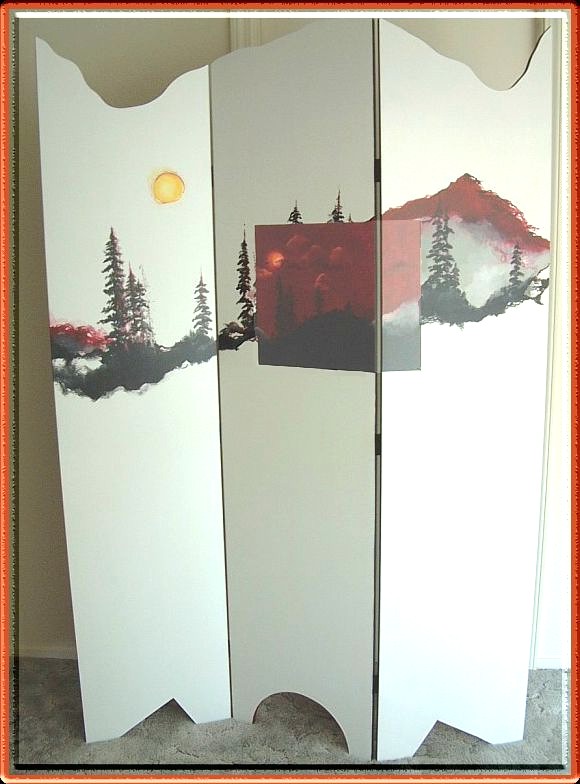
|
I began with a 7' x 4' x 5/8" thick MDF board (Medium Density Fiberboard - which is a composite panel composed of cellulosic fibers, usually wood, made by dry forming and pressing of a resinated fiber mat. This product is easy to cut, less sanding and there is little warping.) and had the home center cut it into 3 strips, two at 16" in width and the middle panel 17". After coming up with a template for the shape of the screen, I drew it onto the panels and cut out the design with a jig saw.
Originally, I had thought of cutting a circle out from the center panel. I knew I wanted a portal-like image but I wasn't sure if I wanted it to be a literal interpretation by removing the circle or done visually with paints. Thus I decided to wait, knowing it could be removed later without much trouble if the design dictated such.
The panels were sanded and then primed with a stain blocking primer.
|

